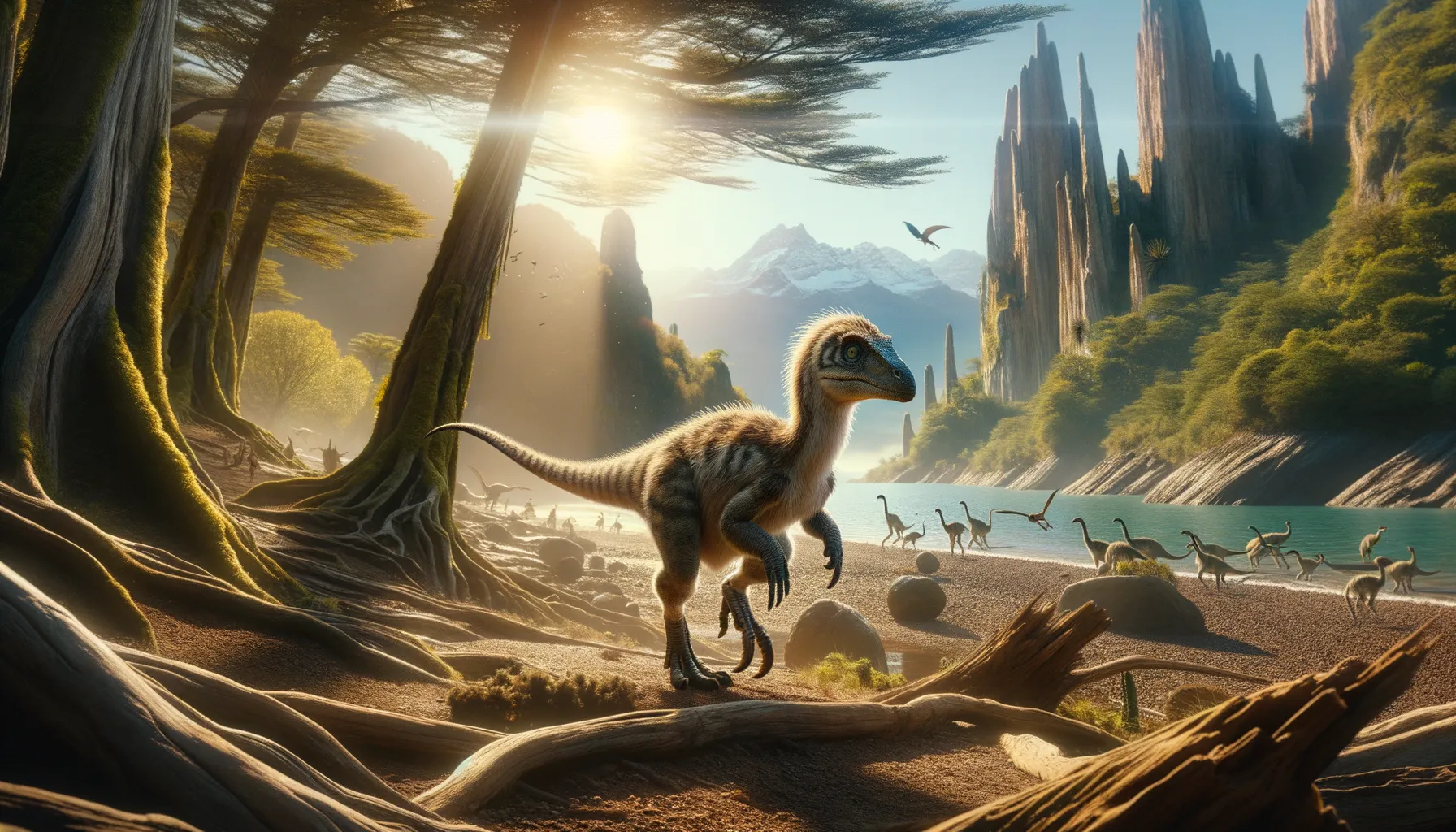
Gasparinisaura
Speedy herbivore of the ancient world.
Period
Cretaceous
Length
Roughly 1.5 meters (5 feet) long.
Height
About 0.6 meters (2 feet) tall at the hips.
Weight
Approximately 13 kilograms (29 pounds).
Gasparinisaura was a small herbivorous dinosaur that roamed the Earth during the Late Cretaceous period in what is now Argentina. It is known for its bird-like features and its ability to move quickly on two legs. With its lightweight structure and keen senses, Gasparinisaura likely had a lifestyle that involved foraging for plants and evading predators. This dinosaur is a prime example of how diverse and adaptable dinosaur species were during the Cretaceous period.
Diet
Gasparinisaura was primarily herbivorous, feeding on low-lying plants. Its teeth were adapted for chewing, suggesting it could handle a variety of vegetation. It likely relied on plants such as ferns and cycads that were abundant during its time.
Hunting
Being a herbivore, Gasparinisaura would not have hunted other animals. Instead, it likely foraged for food, moving through its environment to seek out nutritious plants. Its speed would have been used defensively, rather than for hunting.
Environmental challenges
Gasparinisaura faced challenges such as changing climates and habitat shifts, which impacted food availability. Predators were also a constant threat, requiring it to be vigilant and swift. Competition with other herbivores for resources was another significant challenge, necessitating efficient foraging strategies.
Speed
Moderate sprinter, not known for high speeds.
Lifespan
Estimated lifespan was around 10 to 20 years.
First discovery
Discovered in Argentina in 1996 by paleontologist Luis M. Chiappe.
Fun Facts
- Gasparinisaura lived around 70 million years ago in what is now South America.
- It was a relatively small dinosaur, about the size of a large turkey.
- Gasparinisaura was named after the Argentine paleontologist Zulma Gasparini.
- This dinosaur was a herbivore, feeding mainly on plants.
- Fossils of Gasparinisaura have been found in Argentina's Patagonia region.
- Gasparinisaura had long legs, suggesting it was a fast runner.
- Its fossils are relatively rare, making each discovery exciting for scientists.
Growth and Development
Gasparinisaura likely grew rapidly to reach maturity, a common trait among dinosaurs which helped them evade predators early in life. Juveniles probably resembled smaller versions of adults, adapting quickly to their environment. As it grew, it would have developed more robust limbs and stronger jaws for processing tougher plant material.
Habitat
The habitat of Gasparinisaura consisted of lush landscapes with abundant plant life, such as forests and open plains. It likely thrived in areas with a high availability of food resources. Water bodies would have been vital for drinking, and its habitat would have included rivers and streams.
Interaction with other species
Gasparinisaura likely coexisted with various other dinosaur species, as well as small mammals and reptiles. It may have been preyed upon by larger carnivorous dinosaurs, shaping its behavior and survival strategies. Its relationship with other herbivores might have been competitive yet also cooperative when facing common threats.
Natural lifespan
Gasparinisaura's natural lifespan was likely between 10 and 20 years.
Reproduction
Reproduction in Gasparinisaura involved laying eggs, as with most dinosaurs. Nesting sites were likely communal, providing some level of protection for their young. The eggs would have been incubated by the warmth of the sun, as well as the environment created by nesting materials.
Social behaviour
Gasparinisaura may have lived in small groups, providing mutual protection against predators. Social interactions could have included cooperative foraging and communal nesting. Such behaviors would have been beneficial for survival, particularly in resource-scarce environments.
Fossil locations
Fossils of Gasparinisaura have primarily been found in Argentina, giving insights into its geographical habitat. These discoveries have predominantly occurred in the Neuquén Province, highlighting its distribution range. The fossils provide critical data on the paleobiogeography of South American dinosaurs during the Cretaceous.
